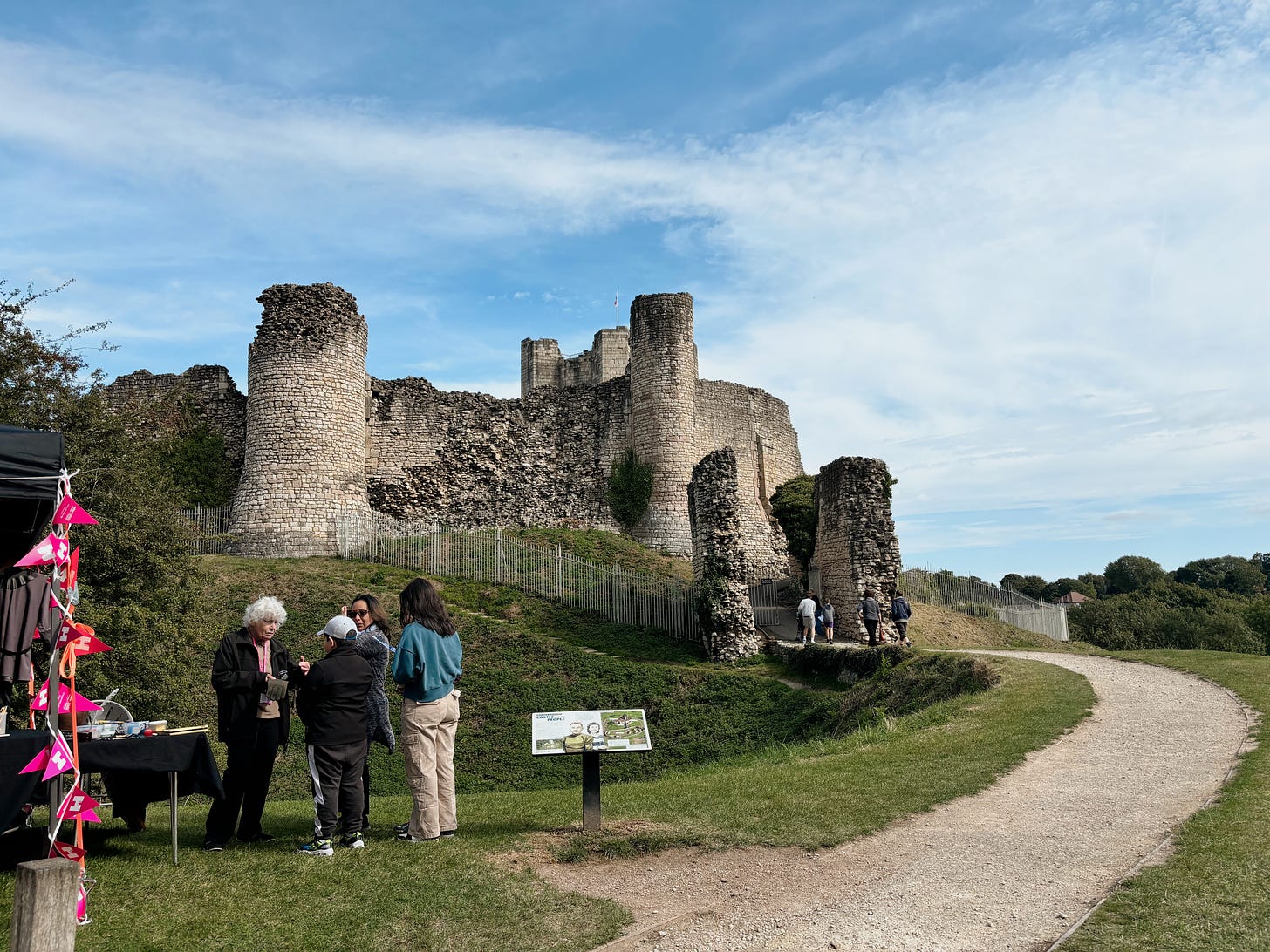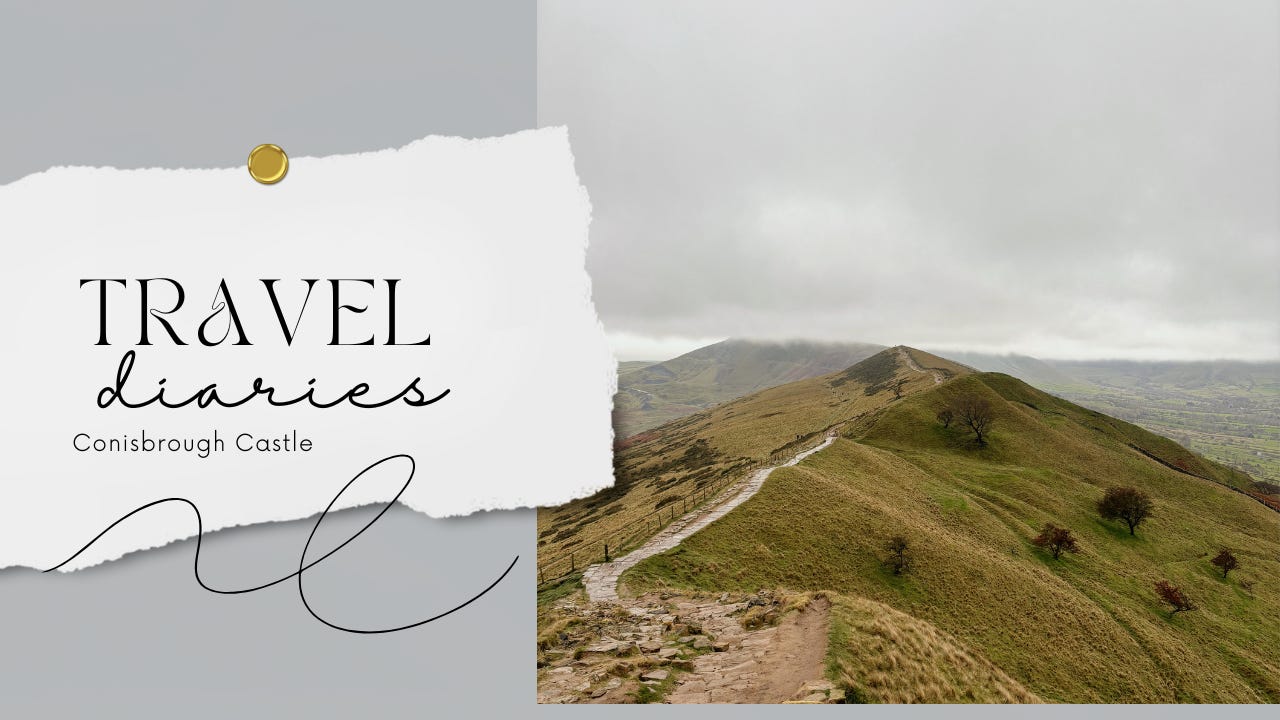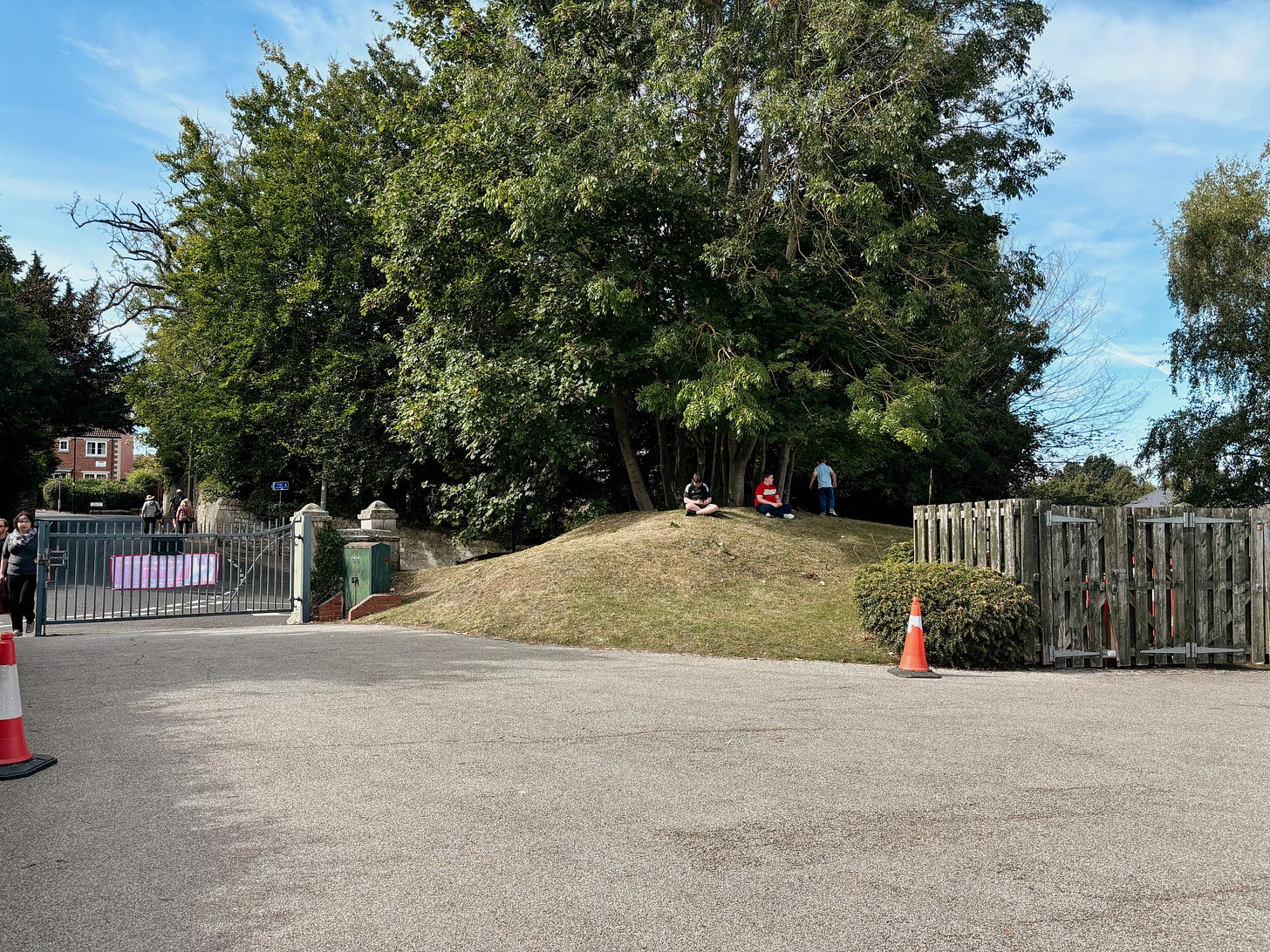That time I visited a castle - but not to see the keep.
Travel Diaries | Conisbrough Castle | September 2024
Origin stories (or prequels) are popular in modern media:
House of the Dragon gives a backstory for Game of Thrones;
Star Wars Episodes I-III attempt to fill in some of the questions viewers had after watching Episodes IV-VI;
and let’s not even get started on the weird and wonderful web of origin stories that Marvel seem to bring out every year.



When I asked Notes recently what the phrase ‘origin stories’ made them think of, this was their response:
I think many of us, in an English historical context, would bring up King Arthur, with the iconic stories of Merlin and the knights of the round table. Though his existence is doubtful, there is something about Arthur that is embedded deep within the English psyche, as if it contributes something concrete to our sense of self, our national identity.
I doubt, however, that many (except for, perhaps, the nerdiest of Anglo-Saxon historians) would think of Hengist and Horsa.
And yet, a millennium ago, alongside their colleagues Cynric and Cerdic and the pagan God Woden, Hengist and Horsa were the origin ancestors par excellence. A connection to them demonstrated authenticity of power, a genuineness that all in the newly-emergent elite sought.
A connection appropriated, not necessarily in truth, by those who lived in and wrote about Conisbrough Castle, a rural outpost of Anglo-Norman power in South Yorkshire, England.

Today, I’m sharing with you a visit I recently made to the castle not to share the castle itself (though it is magnificent and well worth a visit), but rather the purported burial place of Hengist.
This is the first in a new monthly series in which I take you along with me as I journey to sites of early medieval interest across England, revealing their lesser-told stories. Keep your eyes peeled for my reflections on Beddgelert (North Wales), coming in October.
Who were Hengist and Horsa?
Bede says the following in his Historia Ecclesiastica (written c. A.D. 731):
In the year of our Lord 449 Marcian, forty-sixth from Augustus, became emperor with Valentinian and ruled for seven years. At that time, the race of the Angles or Saxons, invited by Vortigern, came to Britain in three warships and by his command were granted a place of settlement in the eastern part of the island …
Their first leaders are said to have been two brothers, Hengist and Horsa. Horsa was afterwards killed in battle by the Britons, and in the eastern part of Kent there is still a monument bearing his name. They were the sons of Whitgisl, son of Witta, son of Wecta, son of Woden, from whose stock the royal families of many kingdoms claimed their descent.1
Bede, the earliest Anglo-Saxon source for Hengist and Horsa, tells us that they were fifth-century warriors who came to Britain at the invitation of a British king, Vortigern, and ended up fighting the Britons and ruling in their place. They were, allegedly, descended from Woden, the Germanic god known in Continental Europe as Odin.
Now, Hengist and Horsa were one of a number of duos named by Bede as having arrived after the withdrawal of the Romans, and so we must be careful when handling stories about them. It may well be that Bede based his account on oral histories or even written ones that preserved some elements of truth, but the repetition of this motif across various origin stories from this time suggests that there might be more fiction than fact in the records that survive.
They were, however, clearly important to Anglo-Saxon elites: why else would it become ‘the done thing’ for kings, including those who would call themselves Christians, to claim descent from these shadowy figures?
What was their connection to Conisbrough Castle?
Just inside the modern gateway into the bailey enclosure sits a small grassy bump (providing a playground for kids in the photo above). The very first time I visited, back in the summer of 2022, the English Heritage guides asked if I’d seen Hengist’s barrow, knowing that I was writing a Masters thesis on Anglo-Saxon ‘princely’ burials (read more about them HERE).
I almost laughed.
(a) There’s no way that we can be sure that he even lived, let alone where he was buried.
(b) If he did live, why on earth was he buried here?!2
It turns out that the legend of Hengist’s barrow at Conisbrough Castle originates with Geoffrey of Monmouth, the 11th/12th century writer. He describes, in Book 7 of his Historia Regum Britanniae, how Hengist retreated to Conisbrough (then called something like Cyningesburh) after being betrayed by his ally Vortigern. There, Geoffrey continues, the bishop of Gloucester ordered Hengist’s execution, which was swiftly carried out and resulted in his burial within the castle walls.
That this legend connecting the new Anglo-Norman castle to the very origins of Anglo-Saxon England appeared when the ruling elites might have been feeling a little fragile is likely no coincidence. There is little evidence that the legend existed prior to this date, although another feature in the local landscape named after the warrior might suggest some sort of local connection to him.3
Lily Hawker-Yates, in her DPhil thesis, has argued convincingly that Geoffrey labelled the barrow as Hengist’s in order to connect ‘his version of the past to the landscape’.4 He was, she goes on, helping elites to understand the landscapes around the new Anglo-Norman centres of power, such as the town of Conisbrough. By explaining how it became an important place, however fictionally, he made a connection between past and present owners, helping them to present a veneer of legitimacy over the shaky foundations of their grip on power.
So, does Hengist’s barrow contain the mortal remains of the original English origin myth’s hero?
It’s very unlikely.
The myth probably came about through Geoffrey of Monmouth’s writing, and then popularised by word-of-mouth transmission until it became de facto truth, as immortalised in Sir Walter Scott’s 1820 tale Ivanhoe.
What it does show us, however, is the importance of the stories people weave to make sense of the past and the landscape. So much more interesting than the question of the ‘truth’ of Monmouth’s claim is the one that asks why he felt the need to fabricate such a tale. What was at stake? Why was the ‘truth’ not enough?
It is that gap between myth and reality, truth and fabrication, that is so interesting to those of us who would call ourselves historians.
At least, it is to me.
Thank you for reading this post on
by . If you’re new here, I’m passionate about sharing medieval history that’s about more than just kings and battles. Connection and relatability are two of my key words here on Substack, and I can’t wait to uncover those hidden stories with you. I’m currently a PhD student (Medieval Archaeology), and I’m delighted to be here to serve and support you.Want to find out more? Check out the post below to see the free and paid offerings here at
.Bede, HE. I.15 (tr. Colgrave & Mynors, p. 26 & 27).
There are, incidentally, quite a few places claiming to be Hengist’s barrow. Unless he suffered the awful fate of dismemberment, they can’t all be telling the truth…
Or simply another canny Anglo-Norman elite hopping on the Hengist trend to bolster his own position amongst hostile Anglo-Saxon subjects immediately after the Conquest.
Lily Hawker-Yates, ‘Barrows in the cultural imagination of later medieval England’. Canterbury Christ Church University. DPhil Thesis. 2019. p. 63.








To me, stories are all about making sense of the past - and the present. You make a really good point with that here.
Is there a link with Hengistbury Head near Bournemouth?